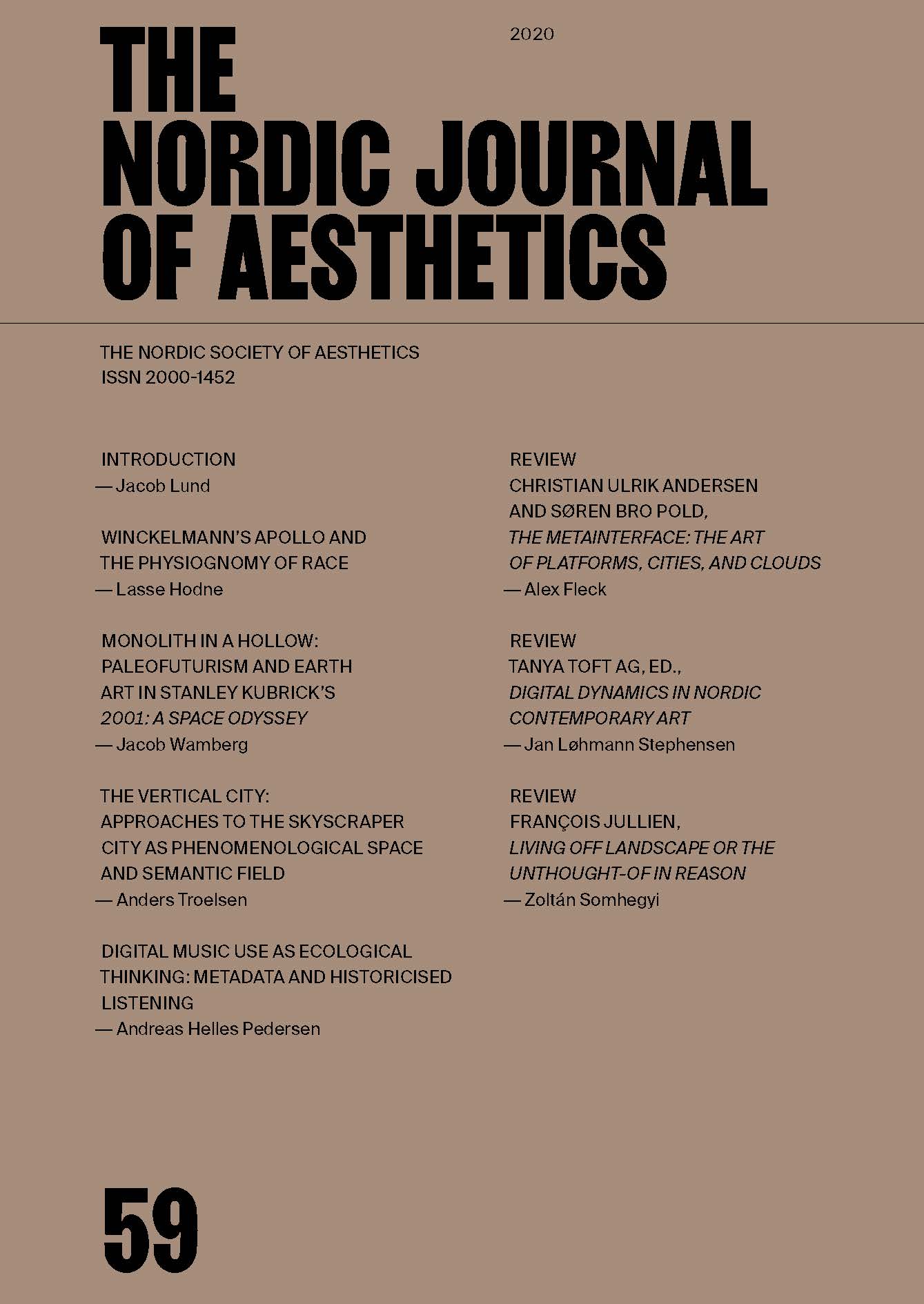MONOLITH IN A HOLLOW: PALEOFUTURISM AND EARTH ART IN STANLEY KUBRICK’S 2001: A SPACE ODYSSEY
DOI:
https://doi.org/10.7146/nja.v29i59.120470Keywords:
Stanley Kubrick, Earth Art, Minimalism, Paleofuturism, Entropy, Evolution, Robert SmithsonAbstract
This article analyses 2001 in terms of what I term paleofuturism. Fusing deep future and deep past, this cyclical figure reconciles rational machinic intelligence with diverse repressed temporal layers: archaic cultures, the embryonic state of individuals, and bygone biological and geological eras. In 2001, paleofuturism is nourished by Nietzsche’s Übermensch of the future, reborn as a child, and by Jungian ideas of individuation, the reconciliation with the shadow of the collective unconscious that leads to the black cosmos itself. Further paleofuturist contexts for 2001 are explored in the so-called “ancient astronaut thesis” of science fiction, speculative science, and pseudo-science. Finally, in minimalism and earth art of the late 1960s we meet a structural parallel to 2001’s bypassing of the organic human body, one that bridges the inorganic entropic realities of deep future and deep past.
Downloads
Published
How to Cite
Issue
Section
License
Authors who publish with this journal agree to the following terms:
- Authors retain copyright and grant the journal right of first publication with the work simultaneously licensed under a Creative Commons Attribution License that allows others to share the work with an acknowledgement of the work's authorship and initial publication in this journal.
- Authors are able to enter into separate, additional contractual arrangements for the non-exclusive distribution of the journal's published version of the work (e.g., post it to an institutional repository or publish it in a book), with an acknowledgement of its initial publication in this journal.
- Authors are permitted and encouraged to post their work online (e.g., in institutional repositories or on their website) prior to and during the submission process, as it can lead to productive exchanges, as well as earlier and greater citation of published work (See The Effect of Open Access).




